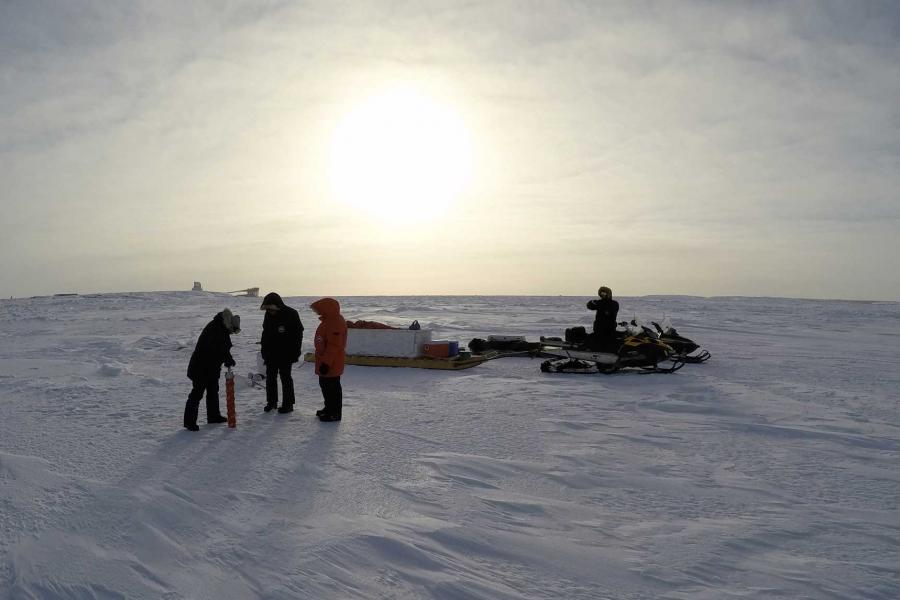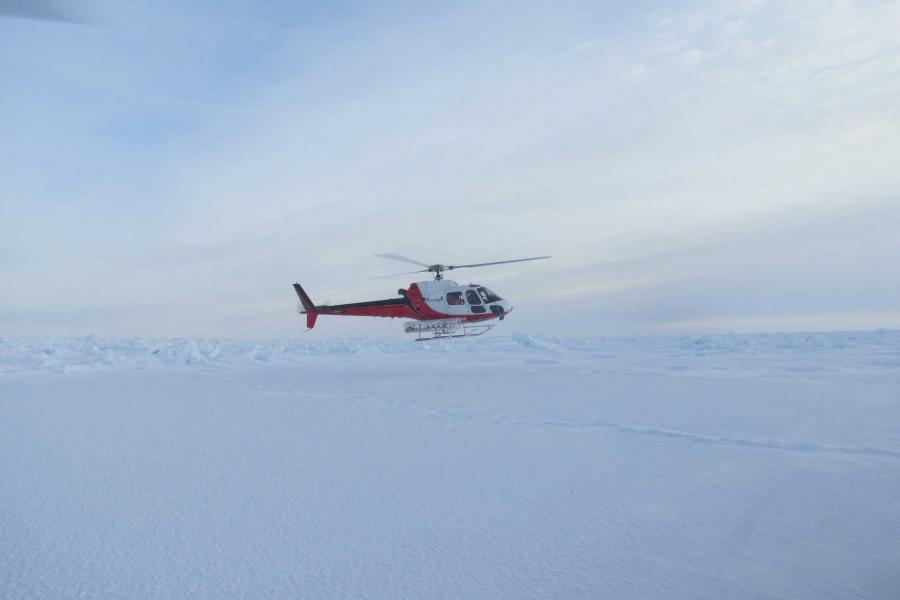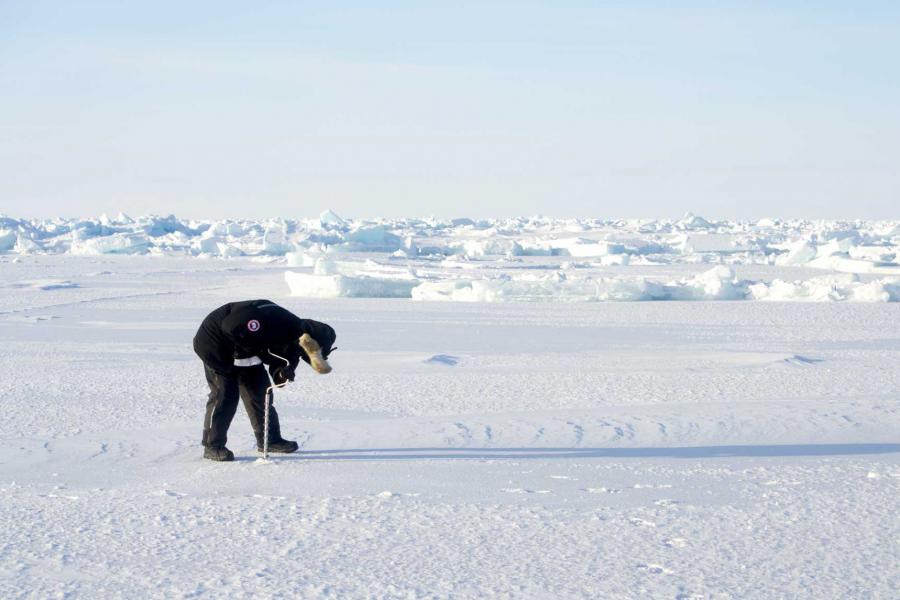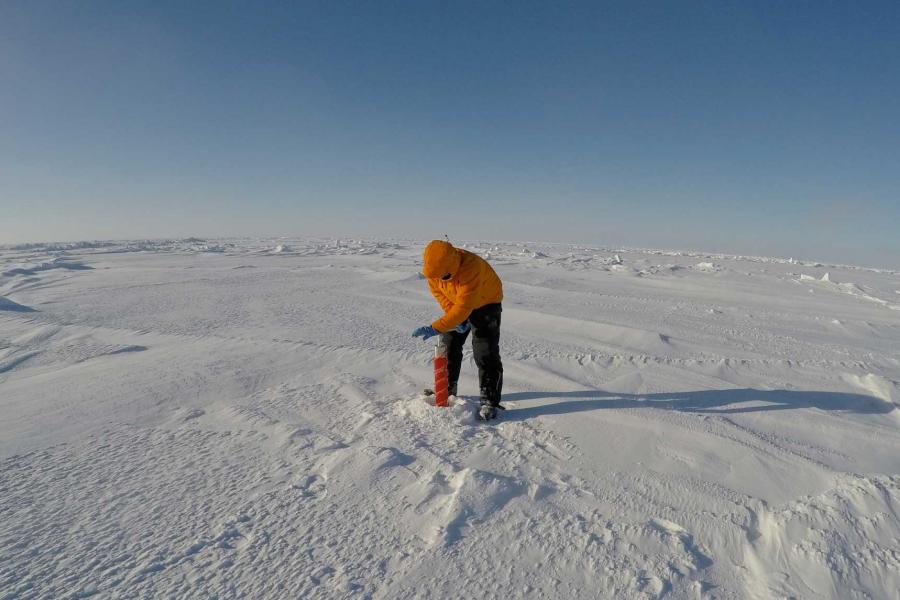A Story from the BaySys Winter Campaign
- Hudson Bay System Study (BaySys)
- Nicholaus Zilinski
What began as an undergraduate summer NSERC research position, resulted in the extraordinary opportunity to participate in the 2017 BaySys (Hudson Bay) system study currently underway. This included flying by helicopter onto sea ice in Hudson Bay to deploy a CEOS designed ice-mass balance buoy. Arctic sea ice plays a large role in the global climate, acting as a heat sink, influencing ocean circulation, as well as being a major contributor to the earth’s albedo. We can understand these relationships best through monitoring changes in the thickness and extent of sea ice, known as ice-mass balance, and using GPS to illuminate sea ice dynamics.
For me, one of the most valuable aspects of the field campaign was being able to see a project through from design, to manufacturing, to deployment. I joined a team from CEOS headed to Churchill, Manitoba, where we stayed at the Churchill Northern Studies Centre (CNSC). CNSC is an amazing facility equipped with labs, great food and perfect spots for viewing auroras.


Our CEOS group has a diverse scientific background, studying water and ice chemistry, biology, and physics. This gave me a chance to see how science is done from a variety of different vantage points. The group collected water and ice samples, and light measurements from below the ice. We also deployed ice-mass balance buoys and weather stations. This sounds easy enough, right? However, even the simplest task becomes difficult in the Arctic, from screwing together equipment to getting a motor started. The cold and windy weather doesn’t play nice. On the very first field day I was going onto the landfast ice just off Churchill. It was a balmy -35 C which made the -15 C back in Winnipeg feel like shorts weather. Luckily, I was well prepared by CEOS members on what to wear, so the cold was no problem, although you feel like a large marshmallow with all those layers on. We weren’t deploying my buoy that day so I assisted whoever needed help. I used the ice auger and core barrel to collect ice core samples, which is more physically demanding than I expected since the ice cores are taken manually. The real test is keeping calm when you realize the one metre ice core sample you just took is now stuck and it doesn’t look like it’s coming out.


After a few days in Churchill the pilots arrived to take us out onto the mobile sea ice. They met with us and planned which floes we would attempt to land on. Then the day came to deploy my ice-mass balance buoy. Not only had I never been in a helicopter, but my first time would be landing on ice. It was a bit unnerving at first, but after seeing how skilled the pilots were, it quickly set any worries to rest. As we flew out over the ice of the Hudson Bay, the landscape was amazing. It was a vast mixture of open water, ice floes and ice ridges. I went out in the afternoon, so had to hurry to set up my buoy as the sun was setting. We had to get things right the first time. After pulling all the equipment out I realized I had forgotten to wire one of the sensors properly. Fortunately, I had a lot of great help from Dave Babb and the team and got the buoy set up and working. We returned to CNSC in the helicopters where I could celebrate mission accomplished, my summer project had been seen through to the end…and it even worked!
